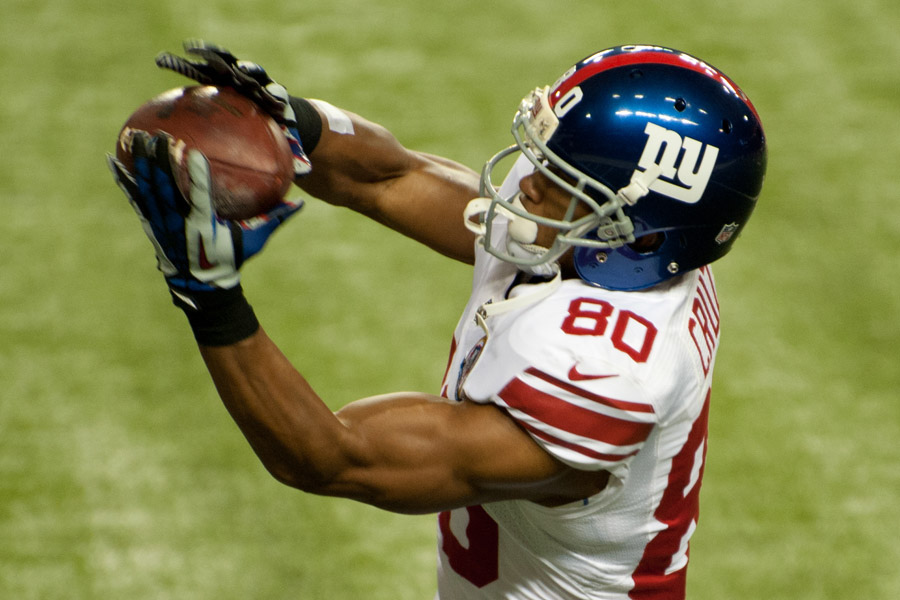[youtube=http://youtu.be/M0V3M6yM3_w]
Would Josh Gordon have been the top option in the 2013 draft class if his college career wasn’t filled with off-field missteps? I thought he was an option in the late-first to early-second rounds of 2012 rookie drafts, which would have placed him in the conversation with this year’s class. If you wish to take a liberal perspective and count his first year in Cleveland as his “senior year,” considering hadn’t played football the year before, then I think it’s a fair argument to make that Cleveland did well with its supplemental pick. I think they make a good argument that he’s better than any receiver in the 2013 class. It may not be true, but the fact there’s a valid argument makes it good enough.
Listens
[youtube=http://youtu.be/p4ASTMFN-h4]
Roger Ebert
You probably heard that Roger Ebert passed away yesterday. He was a cultural icon. I hope you read his amazing blog, which he was transforming into a project expected to go online next week called Ebert Digital. Actually, if there is one piece I recommend you read this week that is not about football, it’s this Chris Jones profile of Ebert published in Esquire almost 26 months ago. It’s one of the great magazine profiles I’ve read.
Thank You
It has been a few weeks since I’ve posted a Reads Listens Views. For those of you new to the RSP blog, I write this type of post most Friday’s. It’s my chance to link to other fantastic football and non-football content. Most of all it’s a chance to thank you.
And it feels like it has been a while since I’ve posted a Friday piece, so I owe you a long overdue word of thanks. The response to the 2013 RSP has been phenomenal. A lot of kind words via email, Twitter, and a few posted on the blog, too. I will update readers later this year when I send the pledged percentage 10 percent of each saleto Darkness to Light.
If you haven’t bought the RSP before, do yourself a favor. Once you do you’ll understand why it is becoming a Rite of Football Spring for those who want the goods on skill position players entering the NFL draft.
Football Reads
- Word of Muth: Examining Ryan Clady’s Skill Set
- Nick Whalen’s Elusiveness Factor: Cordarrelle Patterson, Tavon Austin, and Perez Ashford
- Behind the Scenes 2013 RSP Thoughts on RBs
- How can teams best take advantage of the rookie salary cap?
- Ryan Swope Scouting Report by Sigmund Bloom
Views
[youtube=http://youtu.be/WfwNmpRB8-4]
For a run-oriented era by comparison of today’s pass-happy NFL, there’s some fancy pitching and catching between Ken Anderson and Isaac Curtis. The YouTube commentary is also worth a read from it’s writer with the handle “The Bengals Mind” :
Isaac Curtis had world class speed running a 9.30 seconds in the 100 yard dash making him faster then the legendary Jesse Owens who ran it in 9.40 seconds. To help put that in a even better prospective Usain Bolt can run the 100 yard dash in the 8.9 range meaning Curtis was only around .4(Four Tenths of a Second) slower than Usain Bolt. He was also a superb clutch catcher but even more importantly was how the soft spoken Curtis handled himself on and off the field. Kenny Anderson made it no secret that Curtis was his favorite target saying that when ever he was in trouble he would throw it to Curtis knowing he would catch it.
In the 1973 draft, most experts had Steve Holden as the best wide receiver coming out of college but Paul Brown had Isaac Curtis as the number one wide receiver prospect. So when Paul selected Isaac Curtis with the 15th overall pick, the Cleveland Browns organization and fans celebrated as it allowed them to draft Steve Holden with the 16th pick. They told Paul Brown that “they couldn’t figure out why he took Isaac” and Brown said “I may be 65 but I think I still know talent when I see it.” By the end of his rookie year, Paul Brown was already comparing him to Paul Warfield. Ironic, since Isaac Curtis had some of his best games against the Browns.
Non-Football Reads
- The powerful health effects of ginger versus cancer drugs
- Salesmen in the Surgical Suite
- Life and Love After Rape
Views – How to Truly Listen (H/T to Joe Bryant)
[youtube=http://youtu.be/IU3V6zNER4g]
For analysis of skill players in this year’s draft class, download the 2013 Rookie Scouting Portfolio available April 1. Prepayment is available now. Better yet, if you’re a fantasy owner the 56-page Post-Draft Add-on comes with the 2013 RSP at no additional charge. Best, yet, 10 percent of every sale is donated to Darkness to Light to combat sexual abuse. You can purchase past editions of the Rookie Scouting Portfolio for just $9.95 apiece.






